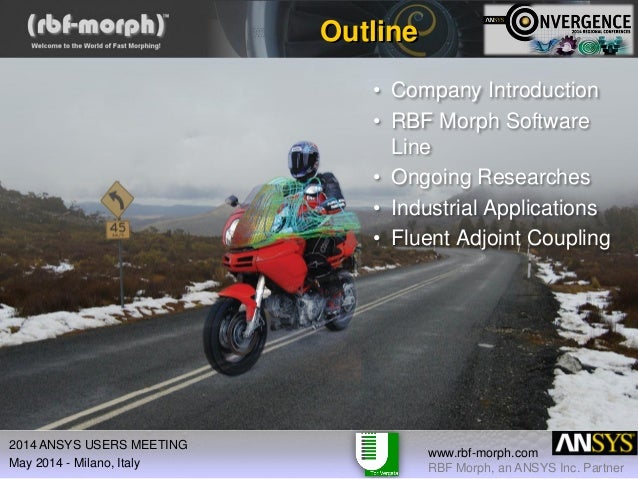

Based on radial basis functions (RBF) the software is used to drive mesh-smoothing (morphing) from source points and their displacements. Also available as a standalone product, RBF Morph provides advanced mesh-morphing capabilities that enable rapid prediction of the outcomes of design changes. The study of the complex motion of a Polymeric-Prosthetic Heart Valve (P-PHV) is presented using the new framework and considering as a reference the established approach based on remeshing.As engineers in industry and research look to develop Digital Twins of their physical products-with the longer-term goal of integration with the Industrial Internet of Things (IIoT)-the pivotal importance of up-front, accurate, real-time modeling and simulation to optimize both manufacturing and product performance is clear.Įnabling the development of this function is RBF Morph, a technology embedded within ANSYS’ newly released R3 version of its advanced engineering software suite, in particular the ANSYS Twin Builder systems-design tool. The proposed method is exact at a set of given key configurations and relies on shape blending time interpolation between key frames. In this paper, starting from the work originally presented in Meshfree Methods in Computational Sciences, ICCS 2020, an innovative method based on Radial Basis Functions (RBF) mesh morphing is proposed, allowing the retention of the same mesh topology suitable for a continuum update of the shape. A very well established approach consists of a continuum update of the mesh that is regenerated by adding and removing cells to fit the evolution of the moving walls.

Effective methods for the time marching adaption of the whole computational grid of the CFD model according to the evolving shape of its boundaries are required. A class of applications, known also as one-way FSI problems, involves a complex movement of the walls that is known in advance as measured or as computed by FEM, and that has to be imposed at the boundaries during a transient CFD solution. A key enabler to have a proper exchange of information between the structural solver and the fluid one is the management of the interface at wetted surfaces where the grids are usually non matching.

High fidelity simulations are obtained using the fine spatial resolution of both the structural and fluid computational grids. Fluid-Structure Interaction (FSI) can be investigated by means of non-linear Finite Element Models (FEM), suitable to capture large deflections of structural parts interacting with fluids, and Computational Fluid Dynamics (CFD).


 0 kommentar(er)
0 kommentar(er)
